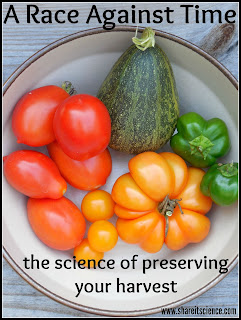Have you ever tried to reason with a
kid about why they shouldn't waste water? "Why? It just keeps
coming out of the faucet!" Just telling them not to waste it is
probably about as effective as our parents telling us to eat our
vegetables because there were starving kids in far off places. "So
what? They won't get this food whether I eat it or not!"
Kids (and adults!) in developed parts
of the world often take water for granted. We are lucky, unless we
are experiencing a drought, to have a fairly consistent, clean water
supply. This is certainly not the case everywhere.
Let's look at 2 current events in the
world's water situation. We've got some good news and some bad news.
Then we'll explore a really effective hands-on way to educate about
water conservation.
This post contains affiliate links, please see disclosures for more details.
So first, the bad news... Have you
heard about the toxic foam that forms on
Bellandur Lake in India? I
hadn't until I was assigned a writing piece on it. A combination of
industrial waste and raw sewage has created a dire situation in this
lake in the highly populated city of Bangalore. For decades pollution
has been dumped in a series of canals that ends in Bellandur Lake.
The winds and rain from monsoon season just add to the problem and
make the foam build up. The foam flies through the air and builds up
on the roads slowing traffic much like a snowstorm. It is giving
people headaches, smells awful and sticks to your skin. Last May it
even caught on fire! Lack of government funds, policing and
environmental regulations prevent the problem from getting any
better. Sort of a foamy nightmare.
The good news...An incredible young
innovator has devised a plan to help clean up the Great Pacific
Garbage Patch.
Boyan Slat, a young Dutch
entrepreneur and inventor, has an ingenious and cost effective plan
in action to clean up a large portion of the bits of plastic that are
floating, and breaking down, in the ocean. This plastic is slowly
making its way into the food chain and causing human health issues,
not to mention the devastation to aquatic wildlife as the trash
floats around in the water. Slat's plan uses natural circular
currents in the ocean, called gyres, to passively collect the
plastic. It is corralled and collected, then recycled into oil to
offset the cost of the collection. Amazing. Read more about his
project,
The Ocean Cleanup, here in
the
kid's article I wrote for DOGOnews.
So, there are negative things happening
to the world's water, and some positive efforts to make changes for
the better. The lesson for our kids is that although Earth is covered
in water, very little of it is available for us to use. That is why
we need to conserve what we have.
An effective hands-on way to show this
is to do this demonstration at school or home. You can have students
or your children help measure out the water in each step. Through the
years I have come across many variations of this lesson. Here are two
versions that I have adapted. One version is for those of you with
access to science lab containers, like graduated cylinders, and the
other version uses things you can more readily find around the house.
Version 1: The World's Water Demo with
Materials from the Science Lab
Supplies:
- 1000 ml graduated cylinder
- 100 ml graduated cylinder
- 10 ml graduated cylinder
- petri dish (or any dish)
- eyedropper
- water
1. Fill the 1000 ml graduated cylinder
with water.
This represents all of the water on Earth.
2. Now pour 30 ml of this water into
the 100 ml graduated cylinder. This represents Earth's fresh
water. The remaining 970 ml represents the salt water in the
ocean. We can't drink salt water!
4. Carefully pour about 6 ml of the
"fresh" water into the petri dish. This represents the
fresh water that is not frozen in ice caps or glaciers.
5. Of the water in the dish less
than 1/3 represents water that is available above ground. Take an
eye dropper and remove 1 drop of water from the dish. This
represents the water that is clean, fresh, not polluted and otherwise
available to use.
Version 2: The World's
Water Demo with Materials from Home
Supplies:
- 1 gallon jug
- 1/2 cup measuring cup
- 1 Tablespoon
- eyedropper (or a straw to
make a drop)
- water
1. Fill the jug with
water. This represents all of the water on
Earth.
2. Take 1/2
cup of this water and pour it into one of the clear cups. This
represents Earth's fresh water.
The rest of the water in the jug represents salt water. We can't
drink salt water!
3.
From the 1/2 cup of water in the clear cup, take 4 Tablespoons of
water and pour this into the second clear cup. This
represents the fresh water that is not frozen in ice caps or
glaciers.
4.
From the cup with the 4 Tablespoons of water, remove one drop with
the eyedropper or straw and put it in the third clear cup. This
represents the water that is clean, fresh, not polluted and otherwise
available to use.
Pretty
mind-blowing, huh? Well there is good news here and there is bad
news. The bad news is, we don't have a ton of available fresh water
on Earth, so we need to understand how precious it is. The good news
is we can teach our kids to conserve it!
Try
these books to teach about water conservation!
































